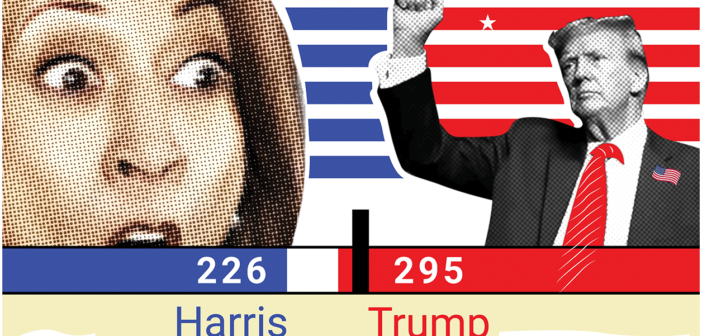Donald Trump’s victory in the November presidential election was a surprise to some, but not to me. I was certain that Trump would win, and that we would know the outcome by Wednesday morning. The reason for this confidence was the Median Voter Theorem, one of the more famous (and underappreciated) theories in political science and public choice economics.
Though not perfectly applicable to the United States political system, the Median Voter Theorem is close enough to generate predictions worth paying attention to. The Theorem says: suppose voters are lined-up in a line from the most liberal to the most conservative. And suppose that winning the election requires a majority of 50%+1 voters. The median voter is the +1 voter, the voter exactly in the middle of this line, just like the median of the highway is exactly in the middle of the lanes of traffic. The winning candidate is the one the median voter chooses.
The median voter is more commonly known as the “swing voter.” Thus, to predict the winner of the election, you need to see which candidate is more in tune to issues most important to the median voter. In the United States, the median voter is a 50-something, working class person without a college degree. (Note that in the U.S., only one-third of voters have a bachelor’s degree or higher.) To think about who will win an election, you need to think about which candidate this voter will choose. It was clear to me that President-elect Trump was significantly leading with this segment of the electorate.
Evidence for this comes from an underappreciated poll, the Gallup Organization’s “Most Important Problem” poll. Every month, the Gallup Organization surveys a random sample of voters to see what they consider to be the most important problem facing the country. In the last poll before the election, the top four issues, by far, were the “economy in general,” “inflation,” “immigration” and “the government/poor leadership.” For as much attention as reproductive rights got in the campaign, it was a distant sixth in this poll, cited by only 2% of voters as the nation’s most important problem, right behind “poverty/homelessness/hunger.”
The median voter is more commonly known as the “swing voter.” Thus, to predict the winner of the election, you need to see which candidate is more in tune to issues most important to the median voter.
One can argue which candidate is best suited to address these top issues; but in politics, perception is reality. As Yale University economist Ray Fair shows in his famous economic model predicting electoral outcomes, when economic issues dominate voter concerns, the incumbent party is in trouble. His model got the 2024 election exactly right.
Space limitations prevent me from rehashing previous presidential elections in this column; but I believe the Median Voter Theorem got those elections right, as well. Think about Bill Clinton’s 1992 campaign slogan, “It’s the economy, stupid.” Had the economy not been in a recession, the median voter would have likely preferred George H.W. Bush.
Keep the Median Voter Theorem in mind during the next election!














